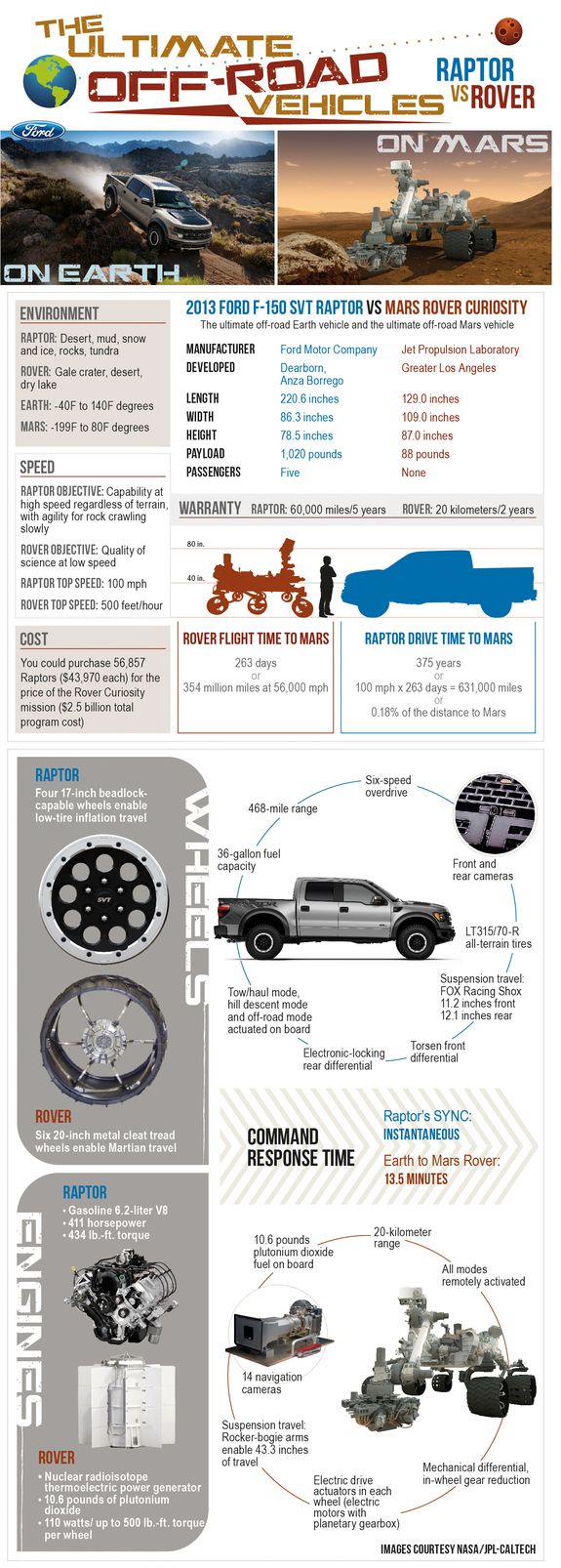New NASA Mars Rover is a Red Planet Mini-Truck, Ford Says

NASA's newest Mars rover is just days away from landing on the Red Planet, and space agency officials have long compared the six-wheeled robot's size to that of a Mini Cooper car. But one car manufacturer says not so fast — Curiosity has some striking similarities to a Raptor truck, according to the Ford Motor Co.
The Mars rover Curiosity, a $2.5 billion mobile science laboratory, will explore the Martian surface looking for evidence that water, and maybe even life, ever existed there. The rover is the centerpiece of NASA's Mars Science Laboratory mission, which launched last November and will land on Mars at 10:31 p.m. PDT Sunday, Aug. 5 (1:31 a.m. EDT, 0531 GMT on Aug. 6).
Ford points out that Curiosity and its Ford F-150 SVT Raptor have similar dimensions: While Curiosity is 129 inches long, 109 inches wide and 87 inches tall, Ford's truck is 220.6 inches long, 86.3 inches wide and 78.5 inches tall. The Raptor's four wheels have a 17-inch diameter, while Curiosity's six wheels are a bit bigger, at 20 inches wide each. Both are designed to tackle tough terrain, though on different planets.
"The space geeks at Ford (and there are more than a few of us here) have been following the journey of the Mars Rover Curiosity with great interest," Ford spokesman Ron Hall wrote in an email. "What's seemed most remarkable to us is simply how large the Curiosity is, especially when you think about the rather compact size of past Mars Rovers."
Ford has created a graphic comparing the two vehicles. For example, the price of Curiosity could buy you 56,857 Raptor trucks (which go for $43,970 each). While the Raptor's top speed is 100 miles per hour, Curiosity tops out at 500 feet per hour. And the Raptor is powered by a gasoline 6.2 liter V8 engine, while NASA's rover runs on plutonium using a nuclear radioisotope thermal electric power generator.
This story was provided by SPACE.com, a sister site to LiveScience. Follow SPACE.com on Twitter @Spacedotcom. We're also on Facebook & Google+.
Sign up for the Live Science daily newsletter now
Get the world’s most fascinating discoveries delivered straight to your inbox.












